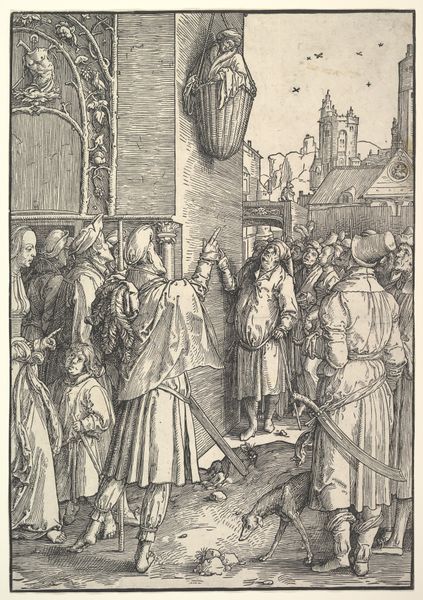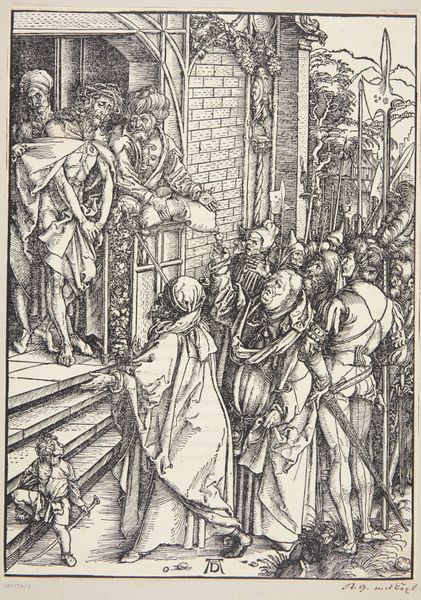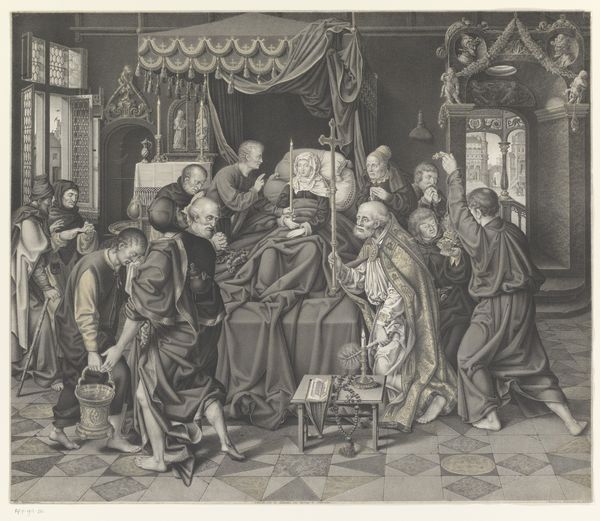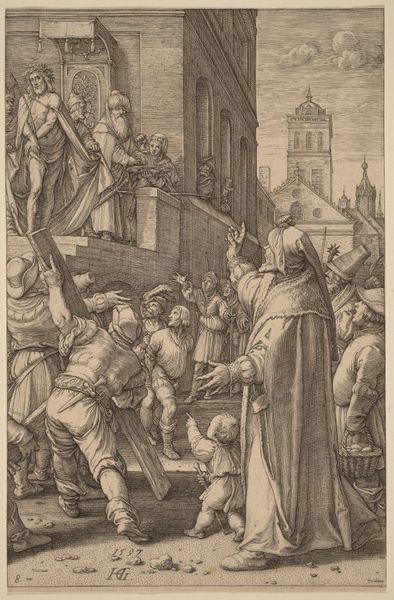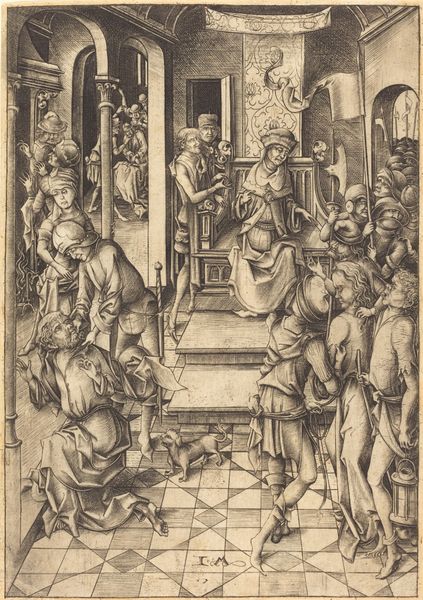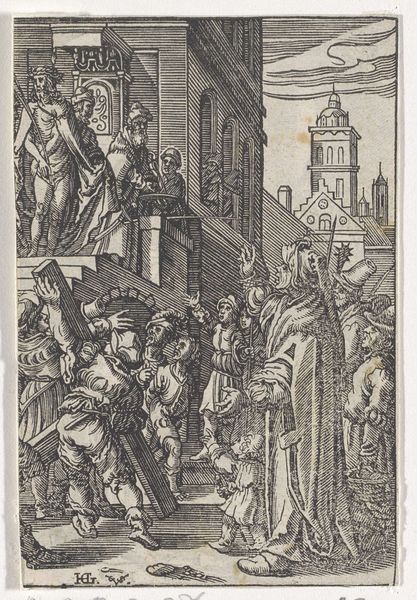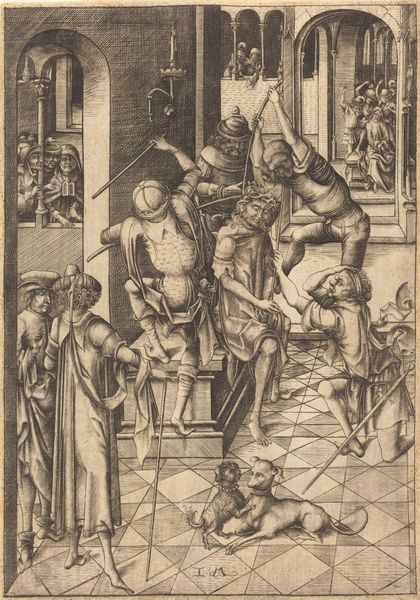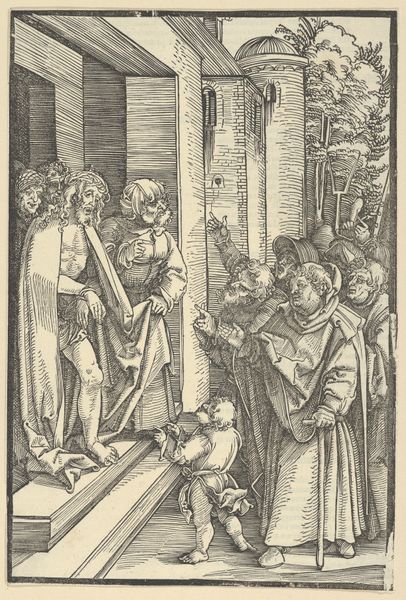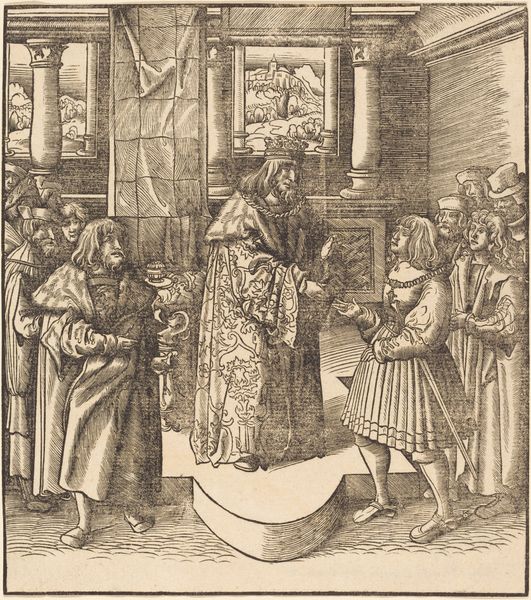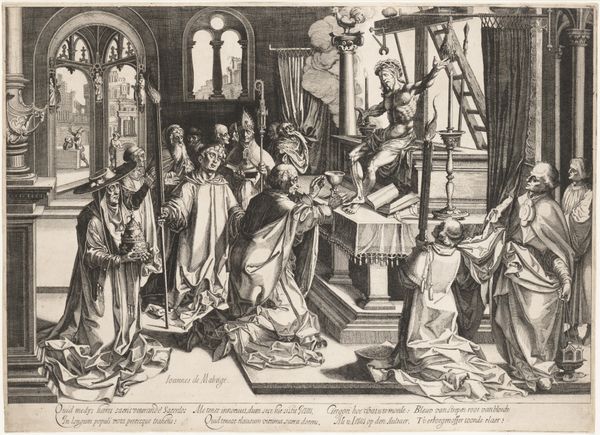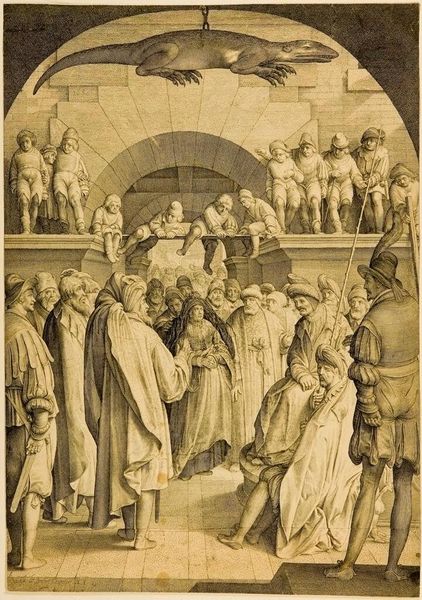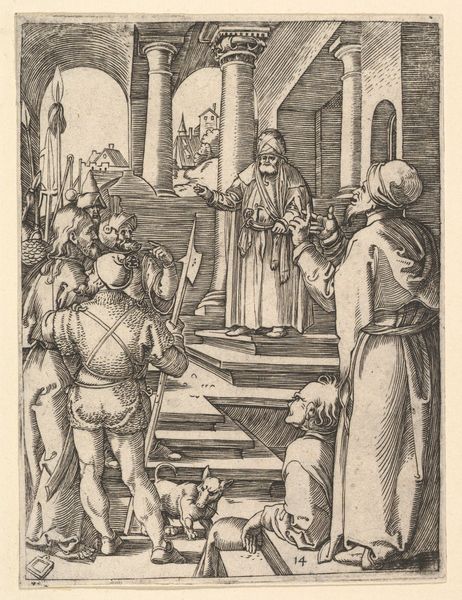
painting, oil-paint, fresco
#
narrative-art
#
painting
#
oil-paint
#
figuration
#
fresco
#
oil painting
#
christianity
#
men
#
history-painting
#
northern-renaissance
Copyright: Public domain
Curator: Gerard David's “The Judgement of Cambyses,” created around 1498, commands attention through its exploration of justice, power, and consequences. Editor: Yes, my immediate feeling is one of somber formality, underscored by the architecture and the serious expressions on everyone’s faces. The tiling on the floor and the dogs, one brown and scruffy, the other grey and sleek, add a striking note of domesticity to a courtroom drama. Curator: Absolutely. David's position at the cultural crossroads of Bruges allowed him to comment on the social anxieties surrounding power during that period. Cambyses, as a symbol, represents the inherent dangers of unchecked authority. We can also read his judgement through a feminist lens; the narrative subtly hints at gendered aspects of corruption. Editor: Fascinating! Beyond its societal critique, the image pulsates with symbols that reach deep into our collective consciousness. Dogs, of course, represent loyalty and betrayal – themes central to the narrative – yet they almost seem oblivious to the drama, underscoring its absurdity. Curator: And the use of bright reds for Cambyses and the executioner creates an almost uncomfortable focus. Red here symbolizes both royalty and bloodshed, highlighting the dual nature of power – its ability to create and destroy, which continues to be of interest across the humanities and social sciences. Editor: Precisely. Moreover, the decorative elements, cherubs holding the garlands overhead, serve as counterpoints. They function ironically; justice may be happening but the decor is reminiscent of Cupid's arrows, the trappings of Love and Happiness, drawing connections with higher law. Curator: Do you see also how the positioning of the characters subtly implicates us, the viewers, in the act of judgment? There are very few focalizing techniques that show any warmth here. Editor: I agree; their unreadable stares and the visual emphasis on duty really do implicate viewers, which makes "The Judgement of Cambyses" still powerful to this day. Curator: Reflecting on this, I’m reminded of the ongoing debates around accountability and systemic corruption, which this image, from so long ago, clearly illustrates in such poignant ways. Editor: For me, the power resides in how David weaves ancient allegories with evergreen reminders of moral ambiguity, which can really change our appreciation of symbols within this period of art history.
Comments
No comments
Be the first to comment and join the conversation on the ultimate creative platform.
